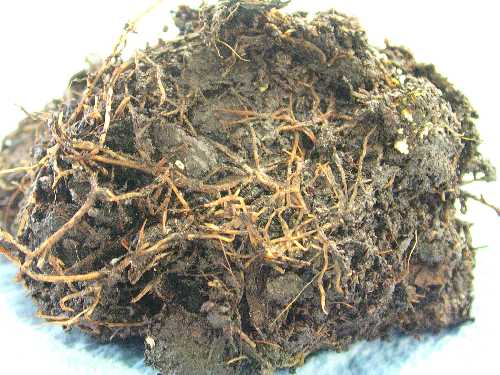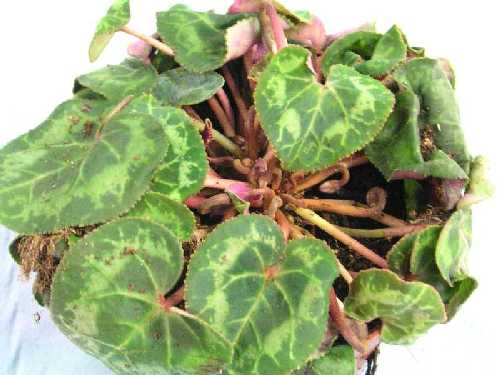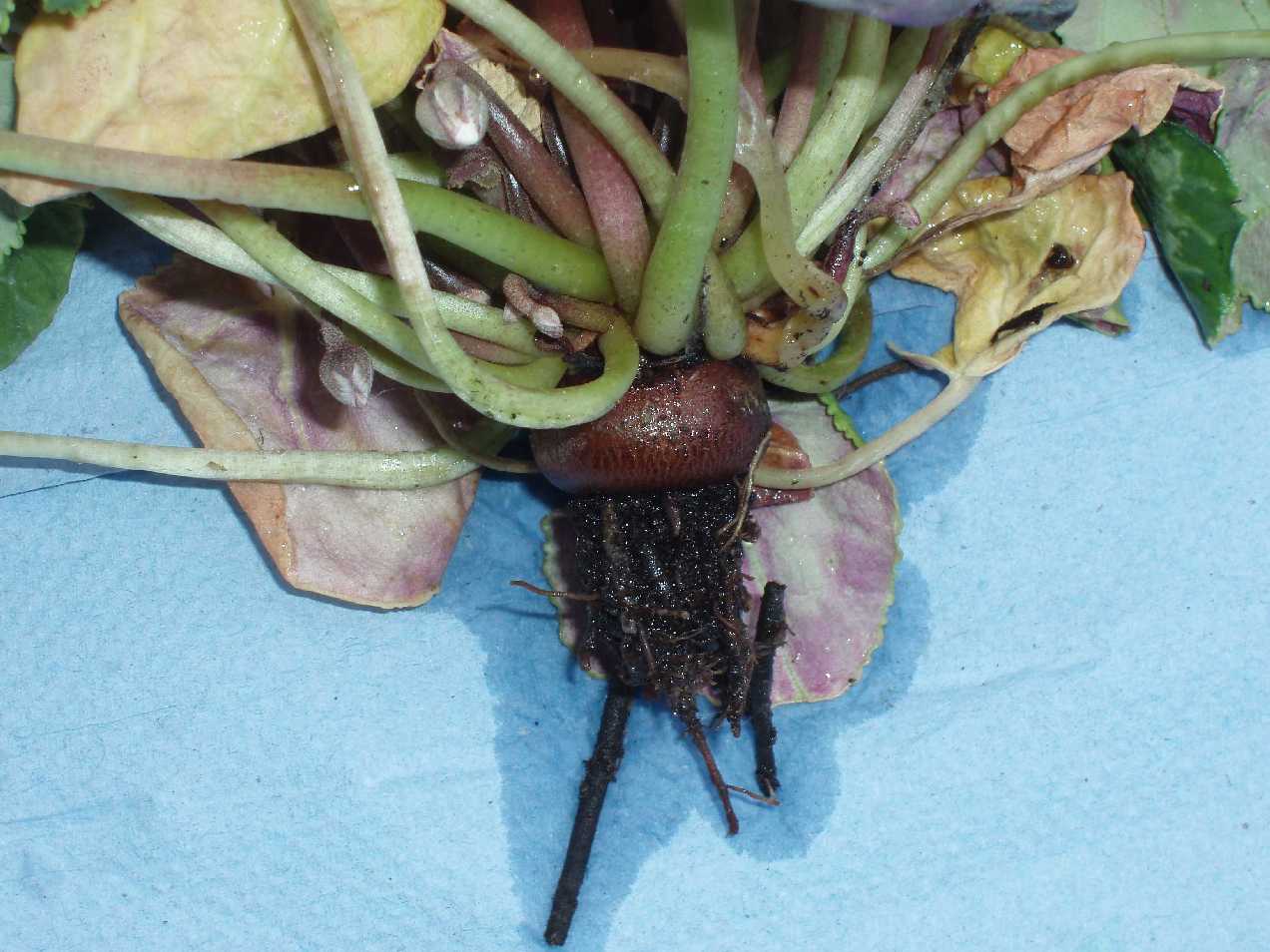Please click here to access the main AHDB website and other sectors.
- Home
- Knowledge library
- Cyclamen disease identification and biology: root rots
Cyclamen disease identification and biology: root rots
Learn to identify symptoms of the key root diseases of cyclamen and gain an appreciation of pathogen biology.
Back to: Disease control in cyclamen
Pythium root rot
Pythium root rot (Pythium species) is a relatively common oomycete disease that causes poor growth and decay of roots.
Favoured by high moisture levels in the growing medium, as free water is required for the pathogen spores to swim in order to infect. Non-mains water is a potential source of Pythium, but water from any source can become contaminated if stored in uncovered tanks.
Pythium also produces long-lived resting spores that can contaminate standing areas, pots and growing media.
Phytophthora root rot
Phytophthora root rots (Phytophthora species) are less common on cyclamen than those of closely related Pythium species. Phytophthora species spread through the crop and persist on the nursery in the same way as Pythium and cause very similar symptoms. Root decay can be severe.
Phytophthora usually results in extensive root decay

Courtesy and copyright of ADAS Horticulture.
Plant collapse due to Phytophthora root rot

Courtesy and copyright of ADAS Horticulture.
Rhizoctonia stem and root rot
Rhizoctonia stem and root rot (Rhizoctonia solani) is an infrequent problem on cyclamen.
In addition to root decay, Rhizoctonia can cause a firm, brown, dry rot of the corm, starting at growing media level. Rhizoctonia rot develops especially under humid conditions, but can be a problem if the growing medium is alternately wet and dry. The fungus is spread by fragments of mycelium that can contaminate most parts of a nursery.
Rhizoctonia can cause a severe root rot

Courtesy and copyright of ADAS Horticulture.
Black root rot
Black root rot (Thielaviopsis basicola) causes similar symptoms to Pythium, although heavily infected roots may show speckled blackened areas (caused by pigmentation of the fungus) if washed and examined very closely.
It produces two spore types, both of which are capable of spreading the disease through a crop. The black thick-walled spore type easily contaminate standing areas, pots, trays and growing media.
T. basicola has a wide host range, including pansies and viola which will increase the threat to cyclamen as they are often grown on the same nursery.
Brown root rot
In addition to root browning, brown root rot (Ilyonectria destructans, formerly Cylindrocarpon destructans), can cause brown spots to develop on the corm (sometimes penetrating quite deeply). Small lesions may also develop at the base of individual leaves, which yellow, wilt or detach. Lesions may also develop at the top of the main roots, causing them to separate from the base of the corm.
While not a common problem in the UK, the disease is found more frequently on younger plants and on plants that receive a growth check.
Useful links
Further information can be found in the following AHDB factsheets:
17/04: Control of Pythium, Phytophthora and Rhizoctonia in pot and bedding plants
21/15: Testing water for plant pathogens
22/15: Methods of water treatment for the elimination of plant pathogens
23/15: Hygiene and disease avoidance underpin the management of oomycete stem and root rots
Authors
Author(s) – Dave Kaye and Erika Wedgwood. ADAS Horticulture.
Original author(s) – Tim O’Neill and John Scrace. ADAS Horticulture.
Webpage content correct as of May 2021.
Topics:
Sectors:
Tags:

